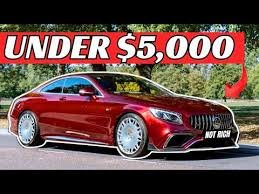Opulence: The Epitome of Luxury and Extravagance
Opulence is a term often associated with the most luxurious and extravagant aspects of life. It refers to the presence of abundance, richness, and grandeur that transcends the ordinary and the commonplace. In the context of lifestyle, design, and consumption, opulence represents a level of sophistication that is marked by indulgence, extravagance, and unparalleled quality. This concept, with its roots in historical nobility and aristocracy, has evolved over the centuries, shaping and defining the way we perceive wealth and luxury in contemporary society.
In this article, we will explore the concept of opulence in depth, examining its history, its manifestation in various sectors such as fashion, architecture, and automobiles, and its role in modern society. We will also delve into the psychology of opulence and the social implications of living an opulent lifestyle.

The Origins of Opulence
The word “opulence” is derived from the Latin word opulentia, which means “wealth, riches, or abundance.” It originally referred to the vastness of resources and possessions that were associated with nobility and royalty. Throughout history, opulence has been used to signify not only material wealth but also a display of power, status, and influence.
In ancient civilizations, opulence was often seen in the construction of grand monuments, temples, and palaces. The Egyptians, for example, constructed the pyramids and tombs that showcased the wealth and resources of their rulers. Similarly, the ancient Greeks and Romans built majestic structures like the Parthenon and the Colosseum, which reflected their economic prosperity and cultural dominance.
Table of Contents
During the Renaissance period in Europe, opulence became synonymous with artistic achievement and intellectual achievement. The wealthy patrons of the arts, including powerful families like the Medici in Florence, invested heavily in the creation of art, architecture, and literature. This era produced some of the most opulent works in history, including paintings by Leonardo da Vinci and Michelangelo, as well as the construction of St. Peter’s Basilica in Rome.
Opulence continued to be a key feature of aristocratic societies during the 17th and 18th centuries, particularly in the courts of Europe. Kings and queens, from Louis XIV of France to the Tsars of Russia, were known for their extravagant lifestyles and the opulent palaces they constructed, such as the Palace of Versailles. These displays of wealth were often intended to reinforce the monarch’s authority and divine right to rule.
Opulence in Fashion and Luxury Goods
Opulence has always been strongly associated with fashion and luxury goods. Historically, high-quality fabrics, intricate designs, and exclusive accessories were reserved for the elite and the powerful. In modern times, luxury fashion brands like Chanel, Gucci, Louis Vuitton, and Rolex continue to embody opulence, crafting products that are not just functional but also symbols of status, refinement, and exclusivity.
Fashion and Personal Style: Opulence in fashion can be seen in the use of luxurious materials such as silk, velvet, cashmere, and rare furs, often adorned with fine embellishments like gold thread, diamonds, and pearls. Haute couture, the pinnacle of high fashion, often involves the meticulous craftsmanship of bespoke garments tailored to perfection for select clientele. These clothes are created with the finest fabrics and are made to measure, ensuring that the wearer stands out as a symbol of wealth and distinction.
Luxury Accessories and Jewelry: Luxury accessories like designer handbags, watches, and jewelry further amplify the sense of opulence. Brands like Hermès, Tiffany & Co., and Cartier have long been associated with opulence, offering products that cater to the elite. For instance, a diamond-encrusted necklace or a custom-made timepiece can represent more than just an accessory—it becomes an investment in timeless luxury.
High-End Footwear: Luxury footwear has also been a hallmark of opulence. High-end shoe designers like Christian Louboutin, Manolo Blahnik, and Jimmy Choo create footwear that is synonymous with prestige. These shoes are made with premium materials, such as exotic leathers, and often feature intricate detailing or embellishments. Owning a pair of designer shoes can be a statement of wealth and sophistication.
Opulence in Architecture and Interior Design
Opulence has long been associated with grand architectural feats and the creation of lavish living spaces. From the palaces of ancient kings to the penthouses of today’s billionaires, the desire for opulent homes and buildings has been a constant throughout history.
Palaces and Mansions: Throughout history, monarchs and aristocrats have commissioned the construction of opulent palaces to showcase their wealth and power. These structures were often designed to be awe-inspiring, with grand facades, opulent interiors, and lavish gardens. Some notable examples of opulent palaces include the Palace of Versailles in France, the Winter Palace in St. Petersburg, and Buckingham Palace in London. These residences not only served as homes but also as symbols of authority and privilege.
Contemporary Luxury Homes: In the modern era, the concept of opulence has evolved to include modern architectural masterpieces and luxurious private estates. Today, some of the world’s wealthiest individuals invest in homes that are equipped with the latest technologies and feature custom designs. These luxury homes often include expansive floor plans, state-of-the-art amenities, private pools, home theaters, wine cellars, and even private art galleries. The use of high-end materials, such as marble, rare woods, and precious metals, elevates the sense of opulence within these spaces.
Interior Design and Decor: The interior design of an opulent home is equally important in expressing wealth and exclusivity. Luxury furnishings, fine art, and handcrafted decorations are key components of opulent interiors. Designers often use rich materials like gold leaf, crystal chandeliers, and Persian rugs to create an atmosphere of extravagance. The use of bespoke furniture, custom-designed fabrics, and unique artwork further adds to the exclusivity of the space.
Opulence in the Automotive Industry
One of the most recognizable expressions of opulence in modern times is in the luxury car industry. The cars produced by high-end manufacturers such as Rolls-Royce, Bentley, Ferrari, and Lamborghini are designed not only for performance but also for luxury, comfort, and prestige. These vehicles are crafted using the finest materials, featuring the latest technological innovations, and are often customized to the preferences of their wealthy owners.
Luxury Vehicles: Luxury cars are a symbol of success and sophistication. Rolls-Royce, for example, is synonymous with ultimate luxury, offering handcrafted cars that combine classic design with cutting-edge technology. The interior of a Rolls-Royce is typically finished with the finest leather, wood veneers, and hand-stitched details. Similarly, brands like Bentley and Ferrari offer vehicles that focus on performance, aesthetics, and exclusivity. These cars are often considered a status symbol, with prices reaching millions of dollars for limited edition models.
Exotic Cars: The world of exotic cars takes opulence to the next level. With high-performance sports cars from brands like Lamborghini, Bugatti, and Pagani, opulence is expressed not only through the car’s looks but also its speed and engineering. These cars feature exclusive designs, luxurious materials, and immense power under the hood. Owning an exotic car is a statement of personal taste and financial success, and they are often limited in production to ensure their exclusivity.
The Psychology of Opulence
Opulence is not just about the physical possessions or the exterior appearance of wealth; it is deeply tied to human psychology and the desire to express one’s status and success. The pursuit of opulence can be motivated by various factors, including the need for social validation, the desire to experience luxury, and the aspiration to live a life that reflects one’s achievements.
Social Status and Prestige: One of the primary reasons people pursue opulent lifestyles is the desire for social recognition and status. Luxury possessions, whether it’s a designer outfit, a private jet, or an extravagant home, serve as markers of distinction and help individuals signal their place in society. In many cultures, opulence is associated with success, and owning high-end goods or living in a luxurious home can elevate one’s social standing.
The Desire for Unique Experiences: Opulence also extends to experiences that are beyond the reach of the average person. Traveling in a private jet, staying at exclusive resorts, or dining at Michelin-starred restaurants are examples of experiences that offer a level of indulgence and comfort that is associated with opulence. These experiences often serve as a form of escapism and a way to enjoy the finer things in life, away from the ordinary.
Aesthetic Appreciation: For some, the allure of opulence comes from a deep appreciation for craftsmanship, design, and beauty. Owning exquisite artwork, rare antiques, or custom-made furnishings is not just about showcasing wealth—it is about surrounding oneself with beauty and creativity. Opulence, in this sense, becomes a form of self-expression and a way to immerse oneself in a world of refined taste.
Opulence in Modern Society
In today’s world, opulence is no longer confined to royal families, aristocrats, and business magnates. With the rise of new wealth, especially from technology, entertainment, and entertainment industries, luxury is becoming more democratized. While opulence may still represent exclusivity, it is no longer reserved for a select few.
Today, there is a growing market for luxury goods and services that cater to the affluent middle class, and many companies are offering products that reflect a higher level of quality, craftsmanship, and design. The emergence of luxury in the digital space, such as the rise of high-end e-commerce platforms, allows consumers to purchase exclusive items and experiences from the comfort of their homes.
At the same time, the concept of opulence has evolved to encompass sustainability and ethical practices. Luxury brands are increasingly focusing on producing goods that are not only luxurious but also environmentally friendly, with an emphasis on sourcing sustainable materials, reducing waste, and ensuring ethical labor practices.
Conclusion
Opulence, in all its forms, represents a pursuit of luxury, beauty, and grandeur that transcends the ordinary. Whether expressed through fashion, architecture, automobiles, or experiences, opulence is a symbol of status, sophistication, and indulgence. It is about more than just wealth—it is a reflection of the human desire to experience the finest things in life and to surround oneself with the very best that the world has to offer.
As society evolves, the notion of opulence will continue to change, reflecting the values and aspirations of each generation. Whether driven by the desire for exclusivity, the pursuit of unique experiences, or the appreciation of fine craftsmanship, opulence will remain a powerful force in shaping the ways we define success and luxury.








Post Comment